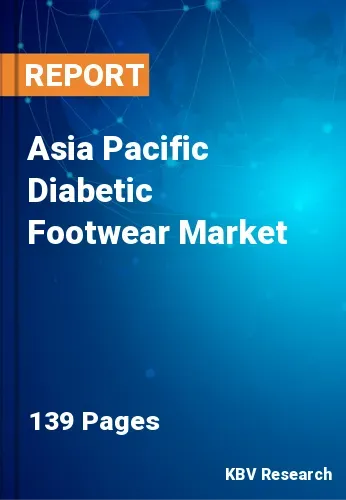The Asia Pacific Diabetic Footwear Market would witness market growth of 8.8% CAGR during the forecast period (2023-2030). In the year 2021, the Asia Pacific market's volume surged to 40,511.5 thousand Units, showcasing a growth of 8.6% (2019-2022).
Diabetic shoes are typically designed with minimal seams or with seams placed in such a way as to minimize friction and irritation against the skin. This is crucial for preventing the formation of blisters and sores, which can be exacerbated in individuals with reduced sensation. Diabetic footwear often features wider toe boxes to accommodate any deformities or swelling that may occur in individuals with diabetes. This helps to prevent the toes from rubbing against the shoe, reducing the risk of friction-related injuries.
Diabetic footwear often utilizes materials that promote breathability and moisture control, preventing the accumulation of moisture that could lead to fungal infections. This holds particular significance for individuals diagnosed with diabetes, given their heightened vulnerability to complications pertaining to the epidermis. Specialized designs aim to minimize shear and friction, reducing the risk of blisters and calluses. This preventive approach aligns with the overarching goal of diabetic footwear to protect the foot from potential harm. The market is dynamic, witnessing several trends that shape product development and consumer preferences.
As per the data from the Government of Australia, the National Diabetes Services Scheme (NDSS) and Australasian Paediatric Endocrine Group (APEG) state-based registers recorded that in 2021, approximately 1 in 20 Australians (approximately 1.3 million) were living with diabetes (prevalence). With nearly one in every five Australians aged 80–84 having diabetes in 2021, the incidence rate was nearly thirty times that of those aged below 40 (0.7%). Upon accounting for age, the prevalence of diabetes in males was 1.3 times that of females. Thus, the increasing prevalence of diabetes in the Asia Pacific region will positively impact the regional market.
The China market dominated the Asia Pacific Diabetic Footwear Market by Country in 2022, and would continue to be a dominant market till 2030; thereby, achieving a market value of $929.6 Million by 2030. The Japan market is registering a CAGR of 8% during (2023 - 2030). Additionally, The India market would showcase a CAGR of 9.4% during (2023 - 2030).
Based on End User, the market is segmented into Women and Men. Based on Type, the market is segmented into Shoes, Sandals and Slippers. Based on Distribution Channel, the market is segmented into Specialty Stores, Online Platform, Footwear Stores and Others. Based on countries, the market is segmented into China, Japan, India, South Korea, Singapore, Malaysia, and Rest of Asia Pacific.
Free Valuable Insights: The Global Diabetic Footwear Market is Predict to reach $13 Billion by 2030, at a CAGR of 8%
The market research report covers the analysis of key stake holders of the market. Key companies profiled in the report include New Balance Athletics, Inc., SKECHERS USA, Inc., Orthofeet, Inc. (Webster Equity Partners), DJO Global (Enovis Corporation), Drew Shoe Corporation, Wolverine World Wide, Inc., Podartis Srl, I-Runner (Healer Health LLC), Pilgrim Shoes and Aetrx Worldwide, Inc.
By End User (Volume, Thousand Units, USD Billion/Million, 2019-2030)
By Type (Volume, Thousand Units, USD Billion/Million, 2019-2030)
By Distribution Channel (Volume, Thousand Units, USD Billion/Million, 2019-2030)
By Country (Volume, Thousand Units, USD Billion/Million, 2019-2030)

Our team of dedicated experts can provide you with attractive expansion opportunities for your business.

